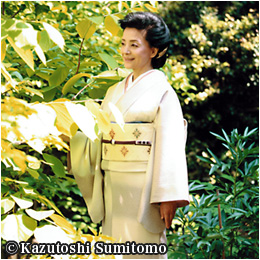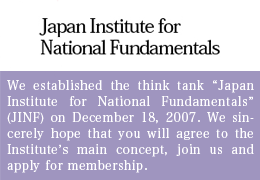CHINA’S BARBARIC TREATMENT OF TIBET IS UNPARDONABLE
During the New Year holidays, I had the pleasure of meeting Prime Minister Losbang Sangay of the Tibetan government in exile. It was his first visit to Japan in nearly four years.
Mr. Sangay was elected prime minister in a free election among Tibetans in August 2011 while serving as a Senior Fellow at the East Asian Legal Studies Program at Harvard Law School. He returned shortly afterwards to Dharamsala in northern India, where the Tibetan government in exile is located. He was succeeding the 14th Dalai Lama as the political leader of Tibet. Sangay will wind up his first five-year term as Prime Minister this coming August, and will be eligible to run for a second term.
When Sangay moved to Dahramsala, he brought his wife Kesang Yangdon and their daughter Menda Rewa with him. Now eight years old, Menda Rewa has been transplanted from an English-speaking world to a Tibetan-speaking environment—a shift from a modern Western society to one in the Orient which leaves much to simple nature’s blessings. She is a lovable and very bright child, able to among other things relate to me a Japanese fairy tale in both her native tongues.
Sangay told me—and his wife and his daughter fully agreed—that they earnestly “wish to live and die as Tibetans should.” He added with a smile that, while he is fully aware of the long-lasting battles that lie ahead for Tibetans, he is eager to continue to take the lead in grappling with these difficult issues.
Sangay delivered the key note address at a symposium held jointly by the private Chiba Institute of Technology and the Japan Institute for National Fundamentals, a Tokyo-based private think tank that I head, calling the attention of the audience to the fierce reality of Tibet today that is hardly imaginable for students living in a peaceful country like Japan. As naturally expected in view of Tibet’s tragic history as China’s neighbor, Sanga was critical of China’s policy towards Tibet.
Positioning Tibet as its core interest along with Taiwan, among other things, China asserts it will never recognize Tibet’s independence. Sangay narrowed Beijing’s claims to five points: (1) Tibet has historically been a part of China; (2) China has “peacefully liberated” Tibet; (3) Today’s Tibetans are happy and satisfied; (4) Tibetans detest the 14th Dalai Lama and do not welcome his return to Tibet; and (5) Nobody knows anything about Lobsang Sangay. Besides, he is a devil. Do any of these claims hold water?
Conspiracy to Kill Dalai Lama
As regards assertion (1), Sangay pointed out that a peace treaty, signed between Tibet and the Tang Dynasty following a war in 821, was inscribed in stone monuments after Tibet had scored a series of victories. He explained:
“A peace treaty signed between King Tri Ralpachen, the 40th king of Tibet and one of its greatest leaders, and his Chinese counterpart, was inscribed in three stone monuments. One was placed in front of the main gate of the palace in the ancient Chinese capital of Chang’an (Xian today); another in front of the main gate of the Jokhang Temple in Lasa, Tibet; and another on the ridgeline of Mt. Gugumeru between Tibet and Xinghai Province, China.
“The inscription declares: ‘Both Tibet and China shall keep the country and frontiers of which they are now in possession…The whole region to the east of that being the country of Great China and the whole region to the west being assuredly the country of Great Tibet.’ This inscription is among the many documents that ascertain that Tibet historically was never a part of China.”
As regards assertion (2), Sangay explained that China’s invasion of Tibet begun in 1950 was far from a “peaceful liberation,” noting that China burned down 95% of the monasteries and temples in Tibet as well as slaughtered a horrendous number of monks and nuns. In point of fact, the People’s Liberation Army (PLA) carried out fierce operations designed to kill not only monks but also the Dalai Lama himself.
It is widely known that Mao Zedong and his followers invaded Tibet in 1949 almost immediately after they managed to establish the People’s Republic of China. The Chinese drove Tibetans to build roads and sent in truck-loads of armed Han Chinese soldiers, stationing them across Tibet. Then in February 1959, they extended an invitation to the Dalai Lama to attend a theater performance slated to be staged at a PLA base—with the condition that he “show up unescorted.”
Sensing that their leader would surely be abducted and harmed, a large number of Tibetans determined to protect him with a thick human wall encircling the Norbulinka Palace where the Dalai Lama resided at the time, urging him to not accept the invitation and shouting “Chinese go home!” It was March 10, 1959.
Amid mounting tensions as a stream of PLA soldiers gathered around the crowd, the Dalai Lama managed to slip out of his palace to a safe spot in Lhokha which borders India. Unaware, the PLA suddenly opened fire on the palace in the afternoon of March 19, the shelling reportedly lasting 41 straight hours. Most of the monks, nuns, and otherTibetans inside the palace were killed while the palace itself was demolished. It was obviously China’s intention to also kill the Dalai Lama.
From his hideout near the Indian border, the Dalai Lama sought political asylum in India on March 29. These are the actual facts of the matter. The Chinese assertion that the “liberation of Tibet” was carried out peacefully is an out-and-out lie.
If assertion (3) was true, why don’t young Tibetans stop burning themselves to death? If assertion (4) was true, why do the wills left behind by those who immolate themselves emphasize their fervent faith in the Dalai Lama and earnest wishes for his return to Tibet? And, should assertion (5) be true, the following question should be directed at every one of the 6 million Tibetans: do you wish to continue living under the one-party dictatorship of the Chinese Communist Party, or would you choose Prime Minister Sengay as your leader in a free election? The answers are obvious: Tibetans would unanimously be sure to reject the Communist Party and select Mr. Sangay.
Tibetans Have No Fear of China
The international community is now faced with the threat of a China which has steadfastly been pursuing military expansion. Against such a backdrop, Sangay emphasizes that coming to grips correctly with how Tibetans have dealt with the Chinese, and vice versa, should be a helpful guide to the international community in how best to respond to China.
At present, the total number of Tibetans amounts to approximately 6 million—less than 0.5% of the total Chinese population. However, Sangay repeatedly stressed: “Tibetans have no fear of China,” adding:
“Everything we say about ourselves is based on solid facts. Lies and fabrications are completely alien to us—unlike the Chinese leadership. The winds of world opinion are blowing in our favor.”
The important thing now is for the international community to expand the circle of nations committed to pursuing the truth, and make certain that China is aware of that commitment. Unfortunately, the US has fallen into a state of withdrawal from the leadership role it once was willing to play within the international community. It is in fact Japan that I believe can replace the US as the leader in expanding the circle of nations committed to searching for the truth.
Among Asian nations, only Mongolia, Taiwan, and Japan have received the Dalai Lama. Actually, the Tibetan leader has been to Japan far more frequently than to other nations, most of which have been unable to receive him—even if they wished to do so—out of fear of China’s retaliation. Under such circumstances, we Japanese should be proud of the warm welcome we have extended on each occasion to the Dalai Lama, as well as Prime Minister Sangay.
Again this time, the Tibetan prime minister will confer with members of the ruling Liberal-Democratic Party and other parties a day ahead of his scheduled departure. It is most pertinent for all Japanese—politicians and citizens alike—to not look away from the tragedies or problems pertaining to minority and human rights issues facing various peoples, with Tibetans on top of the list. For that purpose, members of government and opposition parties should seek every opportunity to promote dialogue with the prime minister, or the Dalai Lama, whenever they choose to visit Japan. After all, Japan has the responsibility and the ability to spread great democratic values across the globe.
(Translated from “Renaissance Japan” column no. 688 in the January 21, 2015 issue of The Weekly Shincho)








